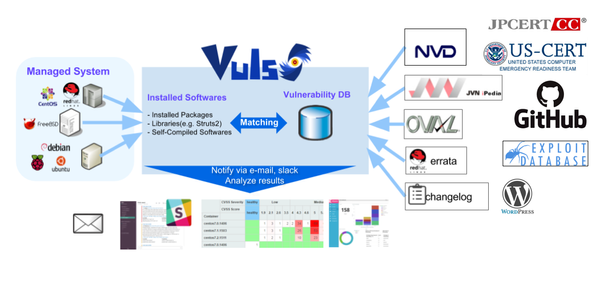QA software testing: main stages, approaches, and tools
Table of Content
When you start thinking about becoming a tester and read something on this topic, new terms and concepts appear literally in every sentence. QA process, unit tests, versatile regression tests, manual and automated testing, and more. It all seems not easy. It may even seem that it will take you years to master this profession.
This article will help you understand the general QA process, the main stages of software testing, and the most commonly used tools. Plus, if you don’t want to spend your time on this necessary process, there is a good alternative – qa software testing services.
Moreover, by reading this article, you will find out:
- The difference between Quality Assurance (QA) and Quality Control (QC).
- The main stages of the QA process in software development.
- The difference between manual and automated testing.
- The kinds of tests and ways of testing.
- The most popular tools help to optimize the process.
What is a software quality assurance process?
The quality assurance process in software development or QA (quality assurance) is a process that prevents errors from appearing in the final product and ensures that the company releases a truly high-quality application. The QA process is more than just quality control and testing.
While quality control (QC) is focused on checking the final product, QA is part of all phases and stages of software development. In other words, QA is a set of measures aimed at preventing defects and errors, and QC is aimed at identifying them. A properly set up QA process ensures that all team members work efficiently, development time is shortened, and costs are reduced.
For sure, the QA process may differ in varied companies. However, as a rule, the main stages and stages are the same. And if you are familiar with them, it will be easier for you to understand all these new terms and concepts.
What are the main stages of the QA process in software development?
- Working with requirements
- Test planning
- Development of test scenarios
- Software testing
- Retesting
- Completion of testing
Working with requirements
In modern companies, like Inoxoft, the QA process begins very early in the software development life cycle, right at the requirements' analysis stage.
Test planning
Once testers have recognized all the demands, they can start creating a testing strategy and planning quality control procedures. In this phase, they define the whole range of work and financial resources. As well, it is important to choose the most relevant method that will be used at each phase of software building, what kinds of testing will be appropriate, and which tools are also required to apply.
Test scenarios development
With a plan in hand, you can start developing test scripts or test cases. Also, try to create checklists, organize the right place for running tests, and make scripts for automated testing.
Software testing
So, it is time when every inch of a code is usually ready for monitoring for bugs and imperfections. A team of QA experts starts checking multiple kinds of tests. Testers report all errors they notice.
Retesting
Immediately after the development team solves the problem, the testers re-test the functionality and perform so-named regression testing. It helps to make sure that the software still works well after the improvements are added.
Completion of testing
After all planned tests have been completed and all corrections have been rechecked, it is time to prepare a test report.
What types or types of testing are used in the QA process?
Now that we understand what the QA process is, let's talk about the different types of tests used in software testing.
Once you understand how the tests are divided into groups, you can easily navigate them:
- Functional and non-functional tests
- Knowledge of source code
- Test execution approach
- Software development phase
Functional and non-functional tests
In functional testing, we check if the application works as expected. In other words, we check if the actual result matches the expected result. In non-functional testing, we test how our application performs under various conditions. So, load tests, security tests, stress tests, and usability tests fall into this category.
Knowledge of source code
If testers know the source code before testing, it is white box testing. Otherwise, we are dealing with black box testing, when testers evaluate only the behavior of the application, without knowing its internal structure. And, gray box testing is a combination of these two approaches. Testers are given limited information about the internal structure of the system.
Test execution approach
Some tests are done by humans and we are talking about manual testing. With this approach, testers execute test cases and report on the results.
Other tests are performed by computers. Test automation engineers create automated test scripts and write code that repeatedly checks software for bugs. Here we are dealing with automated testing.
Each of these approaches has its pros and cons. They complement each other.
Software development phase
Here are a few more types of tests that you will often encounter in publications:
- Smoke tests are designed to test the basic functionality of an application. These are quick-to-run tests that testers use to make sure that key system functions are working correctly.
- Regression tests help you verify that an application works as it should after some changes, such as fixing defects, have been made.
- Load tests are required to validate an application under both average and peak loads.
- Cross-browser/cross-platform testing helps analyze the behavior of an application across different browsers and systems.
Testing tools
Now that we know what the QA process is and what methods, approaches, and types of tests exist, let's talk about what tools testers use in their work.
A testing tool is any product that helps streamline various activities:
- requirements gathering;
- planning;
- test execution;
- reporting;
- analysis of results.
Conclusion
Regardless of what approaches or methods a company uses, the end goal is always the same – to provide customers with the highest quality product.
A robust QA process can quickly lessen financial investments for the whole development and enhance software excellence. And the Inoxoft company can contribute to this process, by helping you save time and avoid difficulties.












